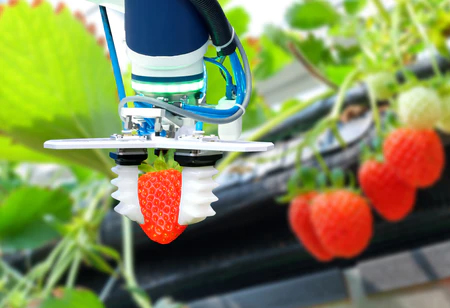THANK YOU FOR SUBSCRIBING
Be first to read the latest tech news, Industry Leader's Insights, and CIO interviews of medium and large enterprises exclusively from Food and Beverage Tech Review
How Can Data Analytics be Used in the Food and Beverage Industry?
Data analytics can help in statistical process control and help predict the factors that will affect the quality of food and beverage

By
Food and Beverages Tech Review | Thursday, January 14, 2021
Stay ahead of the industry with exclusive feature stories on the top companies, expert insights and the latest news delivered straight to your inbox. Subscribe today.
Data analytics can help in statistical process control and help predict the factors that will affect the quality of food and beverage.
FREMONT, CA: Consumers expect to have absolute consistency in the quality and taste of the food and beverage brands they prefer. But numerous factors can influence the way a product tastes when it reaches the consumer, ranging from the manufacturing process to the seasonality of ingredients to storage temperatures. Likewise, numerous other factors might influence the overall quality attributes that matter, like the alcohol content of beer or the whiskey ageing process’s stability. One method that will enable the food and beverage manufacturers to take more control of their quality parameters is data analytics. Multivariate data analysis offers a way to understand which elements will have the most significant effect on a product during manufacturing and predict these factors’ impact on quality and taste.
[vendor_logo_first]Predictive Statistical Process Control
Data analytics can be applied in the food and beverage industry via predictive statistical process control of a batch process, like a batch-based fermentation process similar to the one that is used for brewing and distilling. Real-time data monitoring combined with a prediction engine enables operators to make adjustments to batch productions as deviations occur.
Predicting Shelf-Life
The quality characteristics of a product can change or degrade over time. Understanding the parameters that might affect a product’s shelf life – in time to make the adjustments to counteract them – can save the food and beverage industry manufacturers time and money and prevent the product waste.
In the brewing industry, a beverage’s alcohol content is a critical quality parameter that is routinely analyzed. But measuring this quality parameter can be very time-consuming. Beer manufacturers might consider using other quality measurements instead that will allow the production process to continue unimpeded. Data analytics can be used to determine if new qualitative analysis methods are as effective as traditional methods.
I agree We use cookies on this website to enhance your user experience. By clicking any link on this page you are giving your consent for us to set cookies. More info







